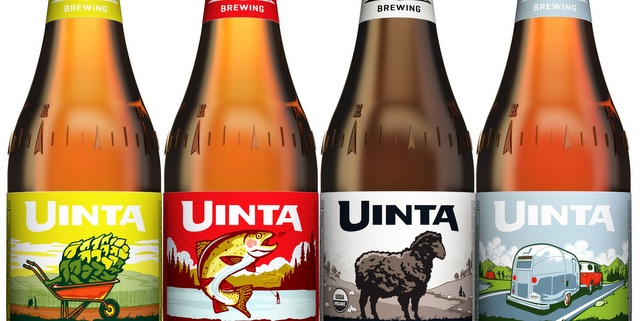In part I of our trademark series, we went through the steps that go into choosing the perfect (and trademarkable) name for your brand. Now it is time to make sure that brand is wholly your own. The history of trademarks after all is the ability to identify the source of goods; if that source indicator is to have value as such, it must be exclusive.
Consider how informative the name “ABC Brewing Company” would be if there were 10 unrelated breweries bearing that same name. How would consumers be able to tell one from the other? Well, that is the problem that trademarks aim to solve. By assigning exclusive rights in a particular name or logo, consumers are able to efficiently identify one brand from another. So now that you have a list of names scribbled on a bar napkin from last month’s article, it is time to submit those names for clearance.
Clearance is yet another task that you can mostly do on your own. While there are a few aspects more easily accomplished with the aid of an attorney, the first several steps can be done by you, sitting on the couch, drinking a hoppy brew. This keeps costs down, allowing you to invest in the important things, like hops and bottles.
Research for consumer confusion
At the most basic level, there are two realms of clearance: common law rights and registered rights. Common law rights are garnered through informal use of the mark in commerce and indicated by that nifty ™ symbol. As these marks are generally slapped on a product or other merchandise and used, there is, unfortunately, no set database to browse when trying to clear your potential mark. So, go to the Internet and begin with the most basic of tools, good old Google. Let’s continue with the example of our imaginary “ABC Brewing Company.”
Google several combinations, like:
- ABC Brewing Company BEER
- ABC Beer Company
- ABC Brewery
- And so on
Browse the first several pages of hits on each search and see if anyone else is using the name.
Remember, the keystone inquiry is whether consumers might be confused about who produces the product. Brewing is not simply a beer term, so widen the search to include other beverages to be on the safe side (for example, ABC Brewing TEA). Trademarks are frequently denied on the basis of a wine that shares the name, and it is better to see such obstacles before investing in a mark. Thus…
Also Google:
- ABC Brewing Company WINE
- ABC Brewing Company TEA
- ABC Brewing Company DRINKS
- And so on.
Commerce provides common law rights
Facebook is another good place to search for potential roadblocks, but keep in mind that simply having a Facebook page using a particular brand name does not, in itself, give that user trademark rights. In order to have any such protection, the mark must be used in commerce and Facebook is not commerce. The same logic applies to Google searches as well — having a website is not the same as using a mark in commerce. A product bearing the mark must be sold for that requirement to be met (with a few exceptions). And selling to your grandma for the sake of selling to your grandma does not count.
Another great tool, especially in the craft beer industry, is using beer rating websites such as Beer Advocate and Rate Beer. The beer names listed on these sites are almost certainly used in commerce since a consumer was able to find it, try it, and rate it. In terms of risk assessment, risk increases as the products increase in similarity. So the risk is much lower if your brewery has a mark similar to a brand of office supplies because consumer confusion is less likely. But teas, energy drinks, sodas and wines, do carry sizable risk. (Caveat: Marks that have very high levels of fame, such as Apple, Starbucks, or even Google for example, can still pose a problem regardless of the similarity of the goods, so beware of widely known marks).
Common law protection’s geographical limitations
Once the mark has been used in commerce, common law protection is awarded first come, first served, but it is also limited to the geographic area in which the mark has been used (or, in some cases, areas that are deemed a “natural area of expansion”). Thus, the drawback to this type of trademark is that if someone in a completely different area starts using the mark, you will not have any recourse despite using it earlier in time. And remember, brand dilution can affect your business’ success heavily in the long term, so try to think ahead distribution-wise.
Registered rights: Broader, but harder
That brings us to the second realm of trademark protection: the registered rights. Registering a trademark provides broader protection but also requires a little more footwork and investment. Registering a trademark occurs at two levels, though you do not necessarily need to do both.
“Be sure to check, not just for your particular class of goods (i.e. beer), but also the sections for wine, spirits, bars, restaurants, soda, energy drinks, apparel, glassware, tap handles, paper goods (think coasters), etc.” You can register your mark at the state level and garner statewide protection, or you can register at the federal level and garner nationwide protection. Every state is a little different, but in California, for example, your mark will be protected throughout the entire state if used on or in connection with your goods. This paperwork comes with a registration fee and must be renewed every five years.
Federal registration, however, will protect your mark within all of the United States. Renewal at the national level is completed every 10 years (with a statement of continued use after five years). In this case, protection can be established, like before, by use in commerce or by filing an intent-to-use application that guarantees your place in line. For the federal protection, you can check the USPTO database. For state protection there are a variety of databases that you can look through.
Same rules apply here: Be sure to check, not just for your particular class of goods (i.e. beer), but also the sections for wine, spirits, bars, restaurants, soda, energy drinks, apparel, glassware, tap handles, paper goods (think coasters), etc. For both filings, the powers that be will examine your mark and decide if consumer confusion is likely (and they will look at all of the above mentioned areas, so be sure you do as well).
If the mark is deemed not confusing, then your mark will be protected against anyone that comes after looking to use the same or a similar mark; if the mark is deemed confusing, then your mark will be denied and you need to start the process over. Granted, you may always fight a rejection if you like, and in many cases it is even advisable, but that is also when it becomes advisable to consult legal counsel. The vast majority of the filings (both state and federal) can be done by anyone, but having an attorney walk you through the maze might be helpful from the get-go.
Lastly, most of the state databases are not free to access and can even be quite costly. Your legal counsel may have already purchased into these database subscriptions, so it might be more cost effective to have them run the search on your behalf.
Don’t let the work/money scare you
Trademarking can be very valuable. Trademarks show ownership and validity of a brand, provide protection against counterfeiting and infringing imports, promote settlement if someone else starts using your brand, and, if need be, make for great evidence in court should it go that far. So, researching your potential brands before investing time, money and emotional attachment can be key.
Remember though, there is no guarantee that what you find is what you get – even the best research sometimes allows things to fall through the cracks, but trademark clearance is like a risk assessment tool. By completing a thorough trademark clearance, you can get a good feeling for your level of risk and potentially save time, money and heartache down the road.
 Candace L. Moon is a San Diego-based attorney who has spent the last four years dedicating her law practice to the craft beer industry. She has worked with over 100 craft breweries and craft breweries-in-planning nationwide, handling business entity formation, alcoholic beverage law, contract review, trademark law, as well as other legal needs. Her clients range from Green Flash and Drake’s to Jamil Zainasheff’s Heretic Brewing. Moon’s undergraduate degree is from the University of Virginia and her juris doctorate is from Thomas Jefferson School of Law in San Diego, Calif. She has been a member of the California State Bar since 2008 and the Brewer’s Association since 2009. Contact her at [email protected]; her website, www.CraftBeerAttorney.com; or her Twitter account, CraftBeerAttny.
Candace L. Moon is a San Diego-based attorney who has spent the last four years dedicating her law practice to the craft beer industry. She has worked with over 100 craft breweries and craft breweries-in-planning nationwide, handling business entity formation, alcoholic beverage law, contract review, trademark law, as well as other legal needs. Her clients range from Green Flash and Drake’s to Jamil Zainasheff’s Heretic Brewing. Moon’s undergraduate degree is from the University of Virginia and her juris doctorate is from Thomas Jefferson School of Law in San Diego, Calif. She has been a member of the California State Bar since 2008 and the Brewer’s Association since 2009. Contact her at [email protected]; her website, www.CraftBeerAttorney.com; or her Twitter account, CraftBeerAttny.






Choosing your craft beer brand names, part II: Trademark clearance http://t.co/NgYD7tgLju
RT @CraftBeerAttny: The 2nd installment of my TM series with @CraftBrewingBiz #beerlaw #craftbeer http://t.co/KQhcIxOIQm
RT @BrownBagBev: Great info! @CraftBeerAttny http://t.co/uD6gxWlRE7 @CraftBrewingBiz
RT @CraftBeerAttny: The 2nd installment of my TM series with @CraftBrewingBiz #beerlaw #craftbeer http://t.co/fiSn4prNps
The 2nd installment of my TM series with @CraftBrewingBiz #beerlaw #craftbeer http://t.co/fiSn4prNps
Don Gregory liked this on Facebook.
RT @craftastrategy: This is a worth while read for those of us in the #craftbeer world
Trademarks
Thanks @CraftBrewingBiz
http://t.co/4i…
This is a worth while read for those of us in the #craftbeer world
Trademarks
Thanks @CraftBrewingBiz
http://t.co/4ibks87p7l #knowledge
RT @CraftBrewingBiz: Choosing your craft beer brand names, part II: #Trademark clearance http://t.co/COV4tLq2CA Good stuff @CraftBeerAttny
RT @BrownBagBev: Great info! @CraftBeerAttny http://t.co/uD6gxWlRE7 @CraftBrewingBiz
RT @crsimp01: Choosing your craft beer brand names, part II: Trademark clearance http://t.co/QmJH5IMPWn
Choosing your craft beer brand names, part II: Trademark clearance http://t.co/QmJH5IMPWn
RT @BrownBagBev: Great info! @CraftBeerAttny http://t.co/uD6gxWlRE7 @CraftBrewingBiz
Great info! @CraftBeerAttny http://t.co/uD6gxWlRE7 @CraftBrewingBiz
RT @CraftBrewingBiz: Choosing your craft beer brand names, part II: #Trademark clearance http://t.co/COV4tLq2CA Good stuff @CraftBeerAttny